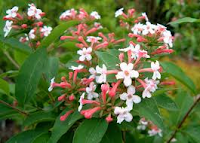Gladiolus is a perennial plant that is multiplied by bulbs, part of the family Iridaceae. Sometimes called "sword lily", the most used name for this plant remains Gladiolus. Types Oenostachys, Homoglossum, Anomalesia and Acidanthera, which initially were considered independent species, currently classified as the gladiolus.
Iridaceae family also includes 260 species, of which 250 are native to Africa (the Sahara) and South Africa. About ten species are native to Eurasia (Europe / Asia). There are 160 endemic species in South Africa and 76 specific varieties of tropical Africa. These classes vary greatly, with the small flowers and discreet, to huge flowers, these categories are used especially in commerce.
Gladiolus flowers come in a wide range of colors, from pink to reddish violet, with markings on the petals, to the flowers white, cream or orange.
Flowers, plants for garden or apartment
Miltonia (orchid)
This plant is part of the Orchidaceae family and is native to South America, growing in tropical forests, flowers with long and very fragrant. It's good to know that Miltonia not stand direct sunlight, and needs a winter rest period at 15 degrees Celsius. It is recommended that the summer is not exposed to temperatures above 28 degrees. Miltonia prefer moisture, so you have to place a bowl of water near the pot. Earth must be constantly wet, even in winter, and the room should be well ventilated and for to prevent disease.
Abutilon
Abutilon is a shrub that grows in tropical and subtropical regions of all continents, with green leaves with jagged edges, very nice, similar to maple leaves, sometimes spotted with shades of cream, yellow or orange. This tree can grow to 10 meters in natural environment.
The flowers are obvious, with five petals, mostly red, pink, orange, yellow or white. The plant needs light and heat to bloom in spring - the end of autumn, but winter temperatures should not fall below 12 degrees C. Watering during the development must be abundant, and from late fall should be reduced so that the earth was not dry.
Throughout the flowering period soil fertilized twice a month. From late summer until mid March and will not be given fertilizer and water will be rare (only enough to keep soil moist). Abutilon is multiplied by cuttings or easier semninte. Spring will be cut from the "mother plant" a few shoots around 12-16 cm which we will plant in sandy soil and taking care to place the pot in a bright place, warm and well ventilated.
The flowers are obvious, with five petals, mostly red, pink, orange, yellow or white. The plant needs light and heat to bloom in spring - the end of autumn, but winter temperatures should not fall below 12 degrees C. Watering during the development must be abundant, and from late fall should be reduced so that the earth was not dry.
Throughout the flowering period soil fertilized twice a month. From late summer until mid March and will not be given fertilizer and water will be rare (only enough to keep soil moist). Abutilon is multiplied by cuttings or easier semninte. Spring will be cut from the "mother plant" a few shoots around 12-16 cm which we will plant in sandy soil and taking care to place the pot in a bright place, warm and well ventilated.
Abelia (Abelia x grandiflora)
Abelia is composed of about 25 species and many hybrids in the family Caprifoliaceae.
These plants are shrubs 1.5 m tall, native to eastern Asia (the Himalayas to Japan) and southern North America (Mexico) species of warm climates are evergreen, while those in cold climates are deciduous. The leaves are opposite or in groups of three, ovate, glossy, dark green, 1.5 to 8 cm long, bronze and red fall color in deciduous species. The flowers are grouped in inflorescences up to 8 flowers are white to pink, bell-shaped, with a penta-lobata corolla, 1-5 cm long, usually fragrant. Flowering period extends from late spring to autumn. Abelia can be planted for ornament in gardens, even that hedgerow.
These plants are shrubs 1.5 m tall, native to eastern Asia (the Himalayas to Japan) and southern North America (Mexico) species of warm climates are evergreen, while those in cold climates are deciduous. The leaves are opposite or in groups of three, ovate, glossy, dark green, 1.5 to 8 cm long, bronze and red fall color in deciduous species. The flowers are grouped in inflorescences up to 8 flowers are white to pink, bell-shaped, with a penta-lobata corolla, 1-5 cm long, usually fragrant. Flowering period extends from late spring to autumn. Abelia can be planted for ornament in gardens, even that hedgerow.
Anthurium (flamingo)
Anthurium is a perennial plant and is part of the Araceae family, which also includes over 700 species originating in tropical mountain areas of Central America and South America, most species growing in Panama, Colombia, Brazil, Ecuador and Guyana Shield .This plant grows wild but is cultivated in greenhouses and gardens. Anthurium is characterized by short stems 15 and 30 cm with rounded leaves and small red flowers (about 3 mm) hermaphrodite, entering into dialogue with loving warmth, humidity and shady places, but no direct sun. Anthurium plant is quite demanding, in most cases draining the leaves, after having first rust spots appear on them. This may be due to too frequent watering. It's good to know that Flamingo is a toxic plant, poisonous enough to cause irritation.
Subscribe to:
Comments (Atom)




